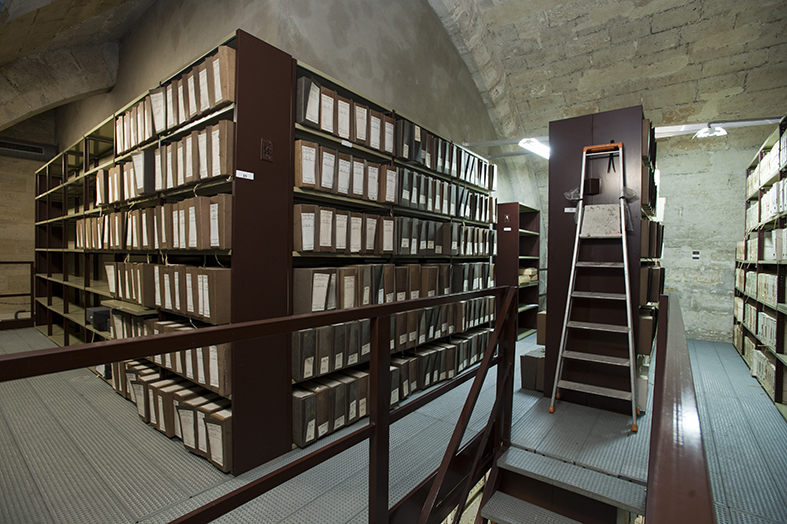The special services and their archives

Long known as the ”Bureau central de renseignements et d'action collection”, the archives of the French special services during the Second World War arrived at the Château de Vincennes following long tribulations, passing from hand to hand and from one shore to the other of the Channel and the Mediterranean. Finally donated to the Army Historical Service by the Directorate General of External Security in December 1999, and undergoing classification work since 2013, the archives had actually been deposited in secure premises in Vincennes for longer than that.
Long-awaited archives
Though the first endowments date back to the mid-1970s, a considerable section of the archives was deposited at the Château de Vincennes in September 1986 on the initiative of the Minister of Defence at the time, André Giraud. This was in response to a controversy triggered by statements from a former head of the Service de documentation et de contre-espionnage (SDECE, Documentation and Counter-Espionage Service), Alexandre de Marenches, published in a book of interviews with journalist Christine Ockrent entitled Dans le secret des princes (published in English as The Evil Empire: Third World War Now). Alexandre de Marenches claimed that the SDECE held German archives from the Second World War, seized by the French special services. In particular, he said that some of these archives mentioned collaborationist activities by French figures previously considered impeccably wedded to the resistance. When reported in the media, this claim caused considerable agitation in popular opinion, especially among those who had fought in the shadows against the German occupiers.
To silence the rumours and quell the doubts aroused by these declarations, the Minister of Defence decided to transfer the archives to the Service historique de l'armée de Terre (SHAT, Army Historical Service), asking the Commission nationale consultative de la Résistance (National Consultative Committee on the Resistance) to examine them. A few months later, the archives, transferred from the fort of Noisy-le-Sec to the Château de Vincennes, were classified and inventoried by SHAT archivists, while remaining under the responsibility of the Direction générale de la sécurité extérieure (DGSE, Directorate General of External Security), which had to be able to access them when needed for research purposes. In 1999, to comply with the prime minister's circular on access to Second World War archives, all the collections dating from the period were permanently transferred to SHAT.
A rich and diverse collection of documents
The collection of documents currently represents a total of about 500 linear metres of archives, together with paper files conserved in thirteen filing cabinets. Describing the collections is far from easy due to the great diversity of their sources and the subjects covered. However, we can attempt a summary presentation of the collections, taking the geographical area where they were constituted as the guiding thread. In this way we can distinguish between several batches.
The first consists of the archives produced in London by the Bureau central de renseignements et d'action (BCRA, Central Bureau of Intelligence and Operations), created in 1940 by André Dewavrin, alias Colonel Passy, under the name of the 2nd bureau and the authority of General de Gaulle. Transferred to France after the war, part of these archives was added to the national archives, while the rest was conserved by the special services. While it is difficult to understand how the documents were divided up at the time, it is clear that the special services retained a large proportion of the archives relating to counter-espionage, all the individual files, including those of agents belonging to the Forces françaises combattantes (FFC, French Fighting Forces), and the accounting and financial documents.
The second collection was gathered together in Algiers. These were the documents produced by the successive counter-espionage services in North Africa between 1930 and 1944, including those reporting to Vichy. They include several archives from before the Second World War produced by the Section d'étude et d'Afrique (SEA, Study and Africa Section), the equivalent of the Service de centralisation de renseignement (SCR, Intelligence Centralisation Service) in mainland France, files from the Bureaux des menées antinationales (BMA, Bureau of Anti-National Activities) and the Travaux ruraux (TR, Rural Works), active from 1940 to 1942, and all the documentation from the Direction de la sécurité militaire (DSM, Directorate of Military Security), created in 1942 by Colonel Paillole. Like the London archives, these collections were transferred to Paris in autumn 1944.
The last set consists of archives produced in the capital and the French military regions from August 1944 by the Direction générale des services spéciaux (Directorate General of Special Services), which succeeded the Algiers and London services and became the Direction générale des études et recherches (DGER, Directorate General of Studies and Research) in November 1944. Following the Liberation, this service was tasked with combating enemy activities and searching for collaborators and war criminals. It consisted of a central office based in Paris and branches in the military regions and abroad known as Bureaux de sécurité militaire (Military Security Bureaux), or Bureaux de documentation (Documentation Bureaux) from November 1944. Some of these Documentation Bureaux later transferred their archives to the DGER.
Classification in progress
In December 1945, the DGER became the Service de documentation et de contre-espionnage (SDECE, Documentation and Counter-Espionage Service), which inherited the London, Algiers and Paris collections. Over the years, these archives were reclassified and moved around by SDECE staff, losing many details of sources in the process. On the other hand, while certain documents have been indexed and made available via manual files or a computer database, others, not having been used, have never even been inventoried. With a global survey of the collections carried out during the 2000s, a few partial research instruments nevertheless enabled the Vincennes archivists to find their way through these archives and carry out occasional searches on behalf of historians. It was not until 2013 that the decision to classify the collection in full was taken. The work, currently in progress, is being carried out by four archivists, sometimes assisted by temporary staff or trainees, and received support in 2015 from the German Historical Institute in partnership with the University of Trier and the Quantitative History Research Centre at the University of Caen. Processing these collections is not easy, because most of them have lost their original coherence: a large proportion of the documents have been incorporated into a continuous series consisting of over 700,000 items (the P series), with no chronological or thematic logic. The archivists are thus trying to reconstitute the original files based on references on the documents or in old inventories to restore the classification initially adopted by the documents' producers.
To date, about 200 of the 500 linear metres of documents have been classified and inventoried. Within the classification framework of the war archives, a new sub-series (GR 28 P) has been created. The research instruments of the Second World War special services archives are accessible in the Louix XIV reading room at the Château de Vincennes and the on the Service historique de la défense website (Defence Historical Service). The processing continues, and could be completed by the end of 2017.
Source SHD
The special services archives (classification status as of 01/12/2015)
_ GR 28 P 1
Archives of the Commissariat national à l'Intérieur
The collection of the Comité français de Libération nationale (CFLN) / Commissariat national à l'Intérieur and the Service courrier, documentation et diffusion (Mail, Documentation and Distribution Service) covers the years 1939 to 1946.
_ GR 28 P 2
Archives of the BCRA counter-espionage section
These archives include information collected by the counter-espionage section of the BCRA in its mission to gather and centralise intelligence.
_ GR 28 P 3
General network files - Classification in progress.
_ GR 28 P 4
Individual network agents' files
Classification in progress. Only the individual files of intelligence network agents are accessible.
_ GR 28 P 5
Collection of BCRA messages
This collection consists almost exclusively of messages exchanged between the BCRA and its agents in France.
_ GR 28 P 6
Archives of the DGER documentation offices
This collection consists of files, mostly named, resulting from investigations carried out by the military security bureaux.
_ GR 28 P 7
Archives of the DGER special Germany section (1934-1953)
This collection contains the archives of the special Germany section (SSA), relating primarily to the organisation and staff of the special German services during the Second World War.
_ GR 28 P 8
German archives
This sub-series includes collections of German archives seized after the war in France and Germany.
_ GR 28 P 9
Files of the DGER documentation services (1945)
This collection consists of individual files produced by the management of the DGER documentation services and its predecessor organisations: the Bureau des menées antinationales (BMA, Bureau of Anti-National Activities) and the Direction de la sécurité militaire (DSM, Directorate of Military Security).
_ GR 28 P 10
Archives of the DGER rural works establishment in Spain
This collection consists of the archives of the French counter-espionage service in Spain.
_ GR 28 P 11
Individual files of agents registered in London
This collection consists of 18,000 files in alphabetical order.
Access to the Service historique de la défense site
Access to the German Historical Institute site (external link)
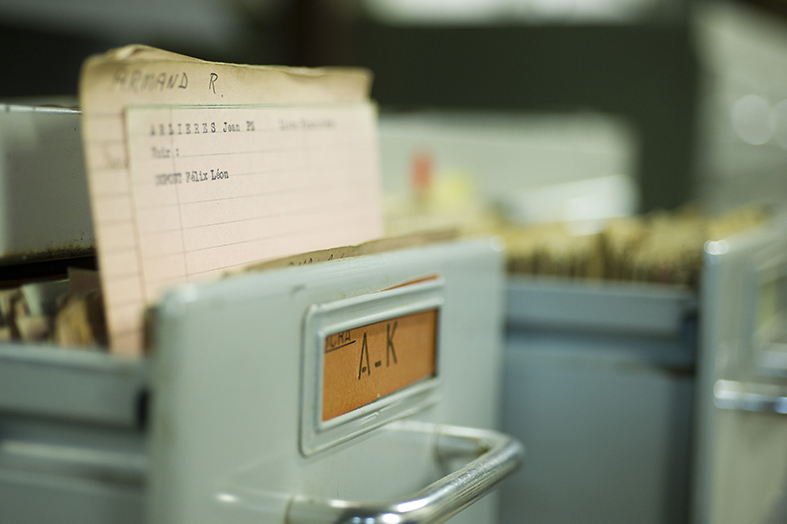
Les locaux de conservation des archives des services spéciaux au Château de Vincennes.
© SHD/Dominique Viola
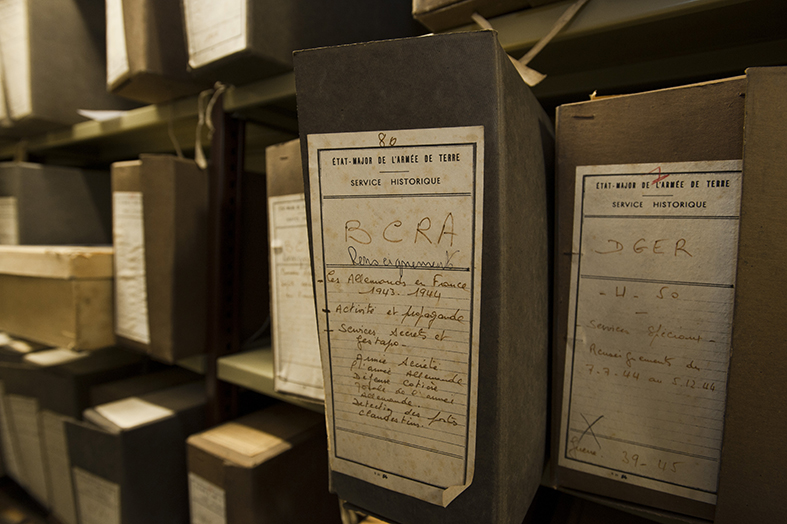
Les locaux de conservation des archives des services spéciaux au Château de Vincennes.
© SHD/Dominique Viola
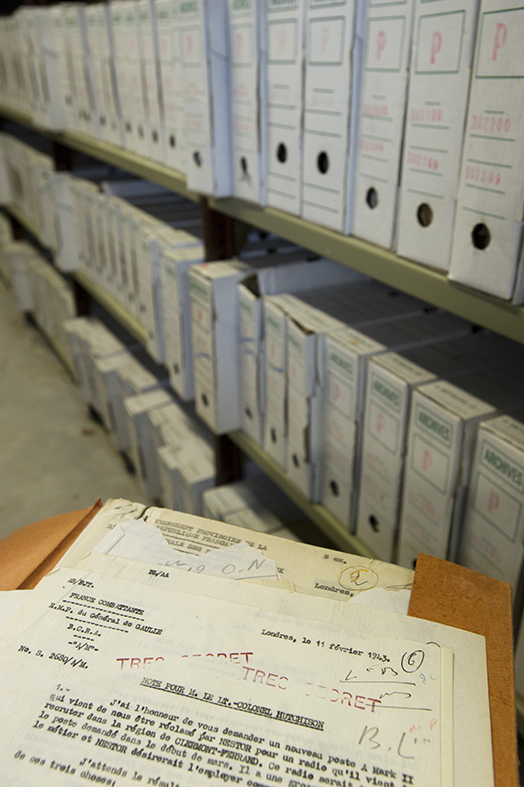
Les locaux de conservation des archives des services spéciaux au Château de Vincennes.
© SHD/Dominique Viola
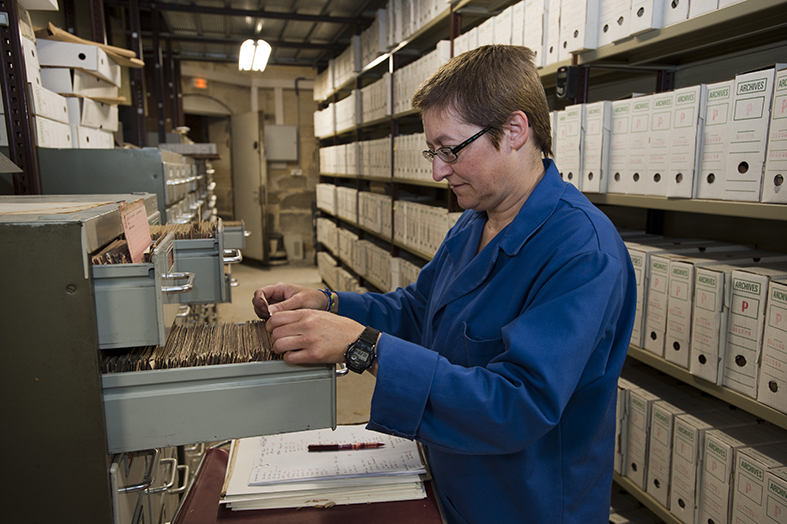
Les locaux de conservation des archives des services spéciaux au Château de Vincennes.
© SHD/Dominique Viola
